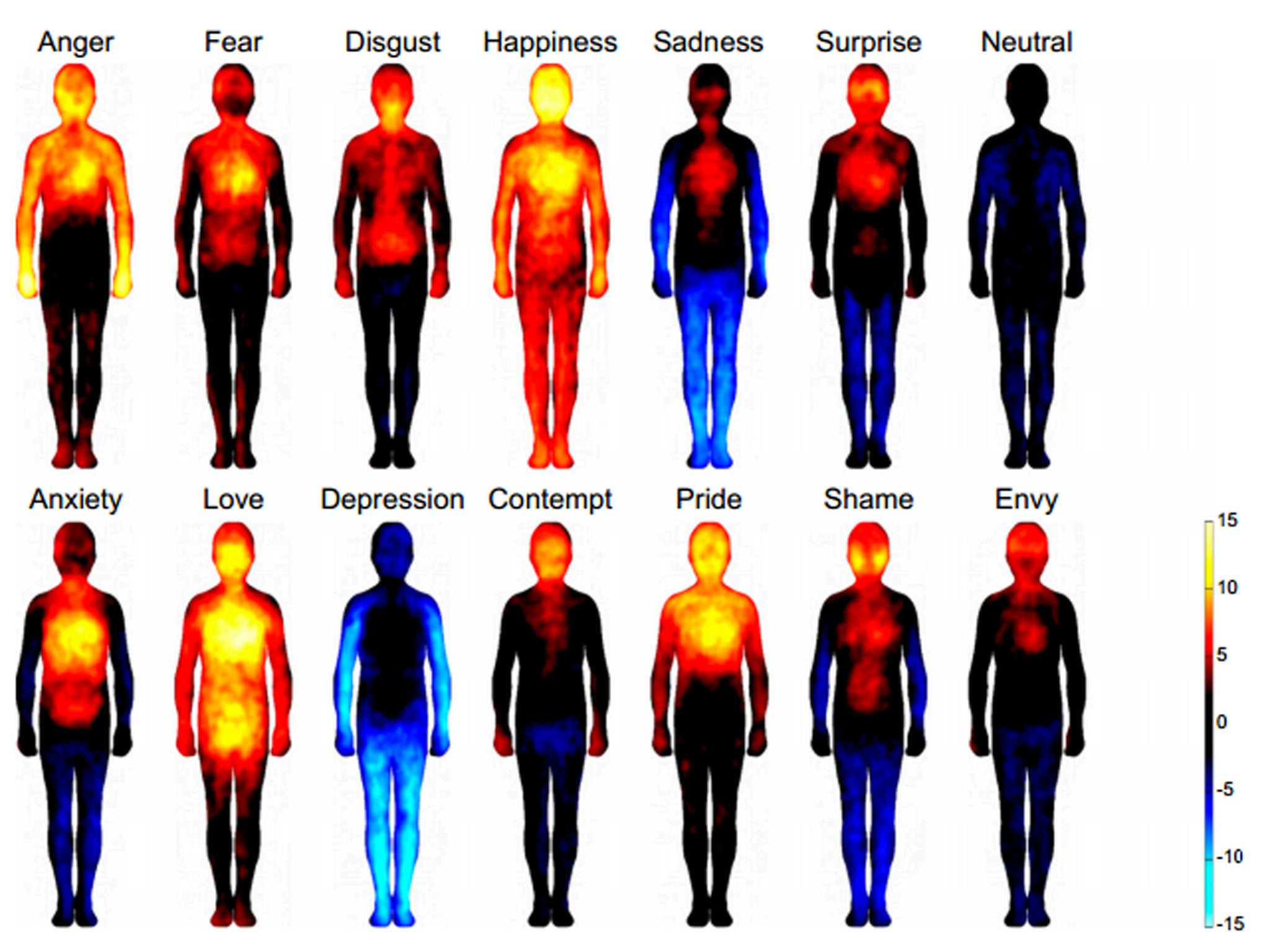Racing pulse, glowing cheeks and a heavy heart: ‘Body atlas’ heatmaps reveal where we feel different emotions
Study shows how humans all feel certain emotions in specific body parts, regardless of language or location

From a racing heart to glowing cheeks, expressions linking emotions to different parts of the body exist in almost every language.
Yet scientists have now discovered that these subjective associations are universal, with the same emotions felt in the same places regardless of where a person is from.
According to a study published in the journal Proceedings of the National Academy of Sciences, such feelings of “somatosensation” could be “at the core of the emotional experience”.
A team from the Biomedical Engineering department at Aalto University, Finland, conducted the experiment using more than 700 volunteers from Finland, Sweden and Taiwan.
Participants were shown emotional videos, pictures of facial expressions and provocative stories designed to trigger certain feelings. They were then asked to use computer-generated human silhouettes to map where on their bodies they had felt any stimulus, adding hot or cold colours to show whether “activity” was increasing or decreasing.
Even when controlling for different language-specific expressions like “heart-ache” for sadness or “cold feet” for nervousness, the results showed that “consistent patterns of bodily sensations are associated with each of the six basic emotions”.
The study’s authors combined the volunteers’ answers to form universal “heatmaps” for a broad range of emotions, and said: “ These maps constitute the most accurate description available to date of subjective emotion-related bodily sensations.”
They noted that many of the basic emotions involved increased activity in the upper chest area, “likely corresponding to changes in breathing and heart rate”. Sensations in the upper limbs tended to go hand in hand with “approach-oriented emotions, such as anger and happiness”, while decreased, “heavy” limbs related to sadness.
While changes in the face were linked to many emotions, throat and belly sensations only really appeared in participants feeling disgust.
“In contrast with all of the other emotions”, the study says, “ happiness was associated with enhanced sensations all over the body.”
Authors Lauri Nummenmaa, Enrico Glerean, Riitta Hari, and Jari Hietanen said their study could in future be applied to the treatment of emotional disorders.
“Unravelling the subjective bodily sensations associated with human emotions may help us to better understand mood disorders such as depression and anxiety,” they wrote.
In pictures: The top science news of 2013
Show all 10Subscribe to Independent Premium to bookmark this article
Want to bookmark your favourite articles and stories to read or reference later? Start your Independent Premium subscription today.

Join our commenting forum
Join thought-provoking conversations, follow other Independent readers and see their replies